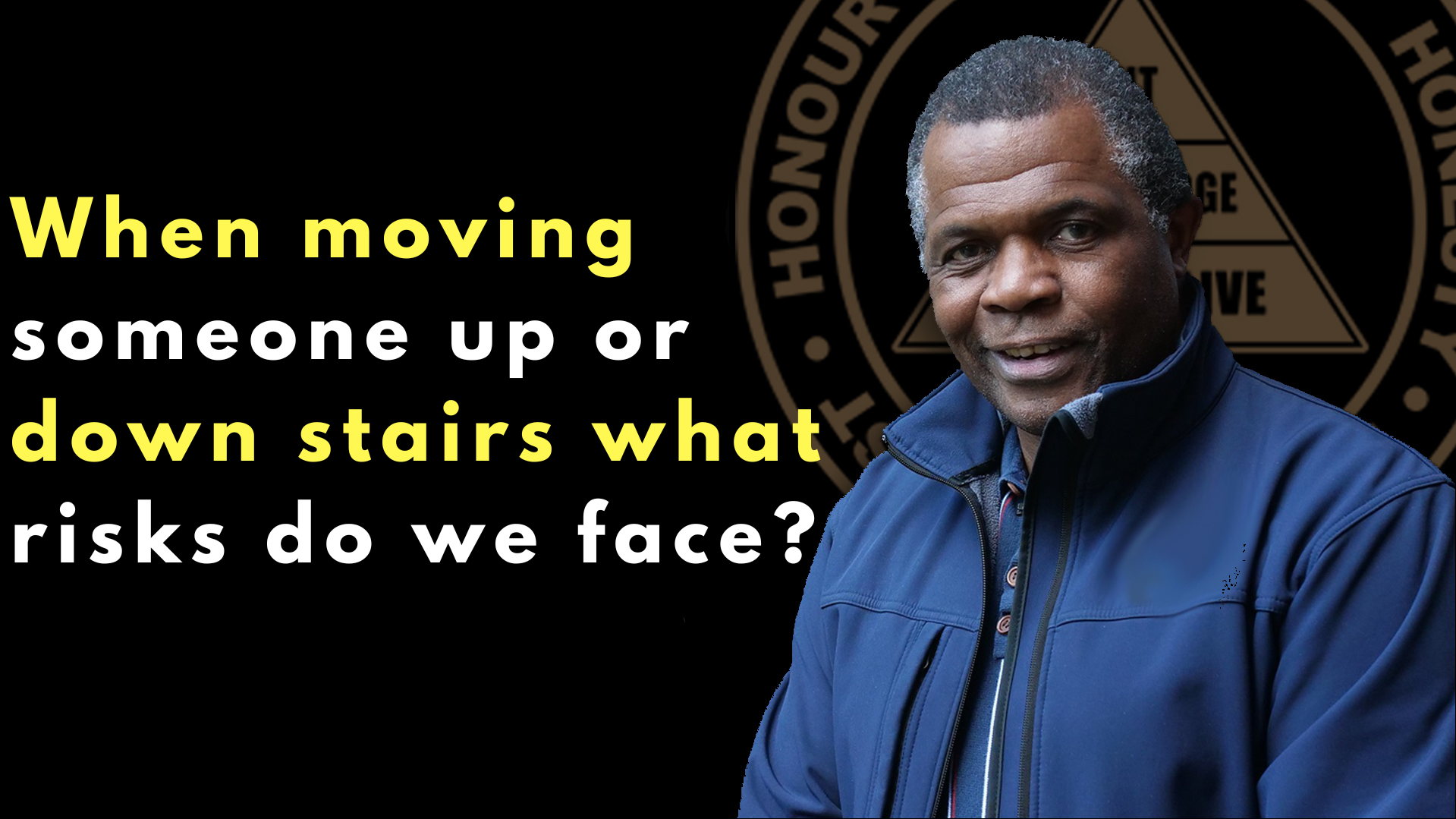Moving individuals up or downstairs under restraint poses numerous challenges for caregivers, healthcare staff and other professionals.
This task falls under manual handling activities, requiring careful consideration and risk assessments to ensure the safety and well-being of both the person being moved and the staff involved.
‘slips, trips and falls are the most common cause of injuries at work’.
In this blog, we will explore the complexities of this task, the common injuries associated with it, and the essential risk assessments needed to carry out this activity effectively.
The Nature of Manual Handling:
Manual handling refers to any activity that involves the transportation or support of loads by hand or bodily force.
In the context of moving someone up or downstairs under restraint, manual handling plays a vital role, as it involves physically manipulating the person to navigate stairs.
The Challenges of Moving Someone Up or Downstairs under Restraint:
- Lack of Mobility – individuals under restraint may have limited mobility due to medical conditions, physical disabilities, or cognitive impairments. This can make the manual handling task more demanding and potentially risky.
- Safety Concerns – any physical restraint used to control movement adds another layer of complexity to the task. Poor techniques or insufficient safeguards could result in injuries to the person being moved or the staff involved.
- Weight Distribution – the uneven distribution of weight in the person’s body, as well as any equipment, can make manoeuvring a person on stairs tricky and require extra caution.
Common Injuries:
- Falls – moving someone up or downstairs poses a risk of falls, which can result in various injuries, from minor bruises to severe injuries.
- Strains and Sprains – improper movements, poor restraint holding techniques and resistance from the person can lead to strains and sprains in the back, shoulders, and other muscle groups.
Risk Assessments:
To carry out the task of moving someone up or downstairs a thorough risk assessments must be conducted, and appropriate control measures put into place. Key considerations include:
- Training – ensure that all staff involved in this activity receive proper training on restraint techniques required to move a person up or downstairs.
- Staffing – are there enough trained staff available to carry out the activity safely; including where necessary additional staff to manage crowds.
- Communication – establish clear communication between staff members during the movement to ensure coordination and the prevention of accidents.
- Assessing the Individual – each person must undergo an individual risk assessment to determine the most suitable approach to moving them. Consideration being given to the person physical and cognitive capabilities.
- Equipment – are assistive devices like hoists, slings, or stair climbers necessary to aid movement.
- Environment – evaluate the staircase and surroundings for any potential hazards or obstacles that could impede safe movement.
Conclusion:
Moving someone up or downstairs under restraint is a challenging high-risk activity that requires careful consideration and a thorough risk assessments.
Understanding the complexities involved, implementing necessary control measures and having appropriately trained staff will improve the safety and well-being of both the individuals being moved and the staff moving the person.
Prioritising safety and effective restraint techniques is essential in providing care and support whilst reducing the risk any potential harm being realised (ie; things going wrong).

